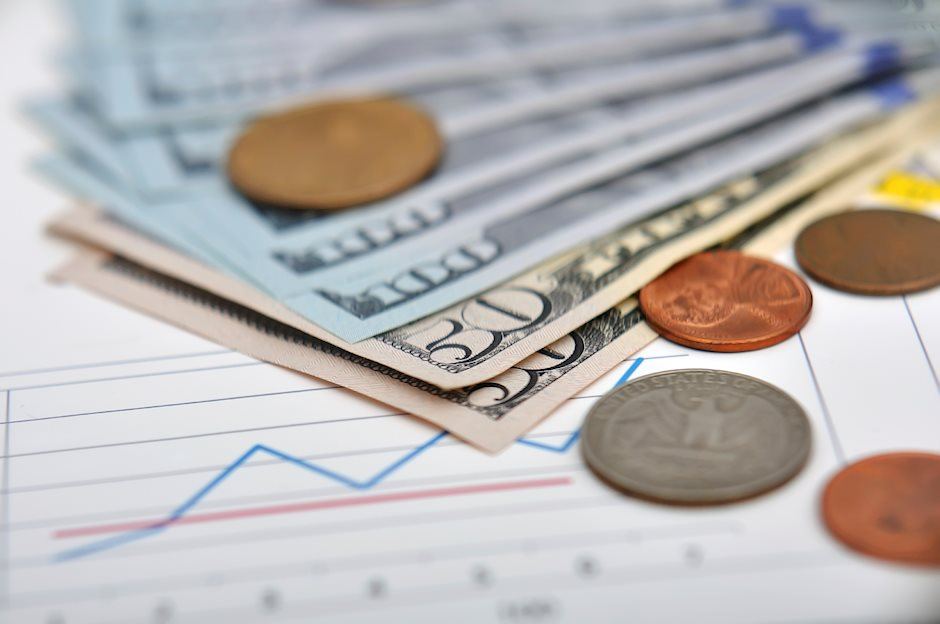US Dollar tallies a wining day despite weak GDP revisions, eyes turn to PCE data
- DXY index is showing gains, currently standing at 103.90, after hitting a high of 104.20.
- The second estimate of Q4 US GDP came in at 3.2%, lower than expected.
- Expectations of the Fed delaying cuts favor the Greenback.

The US Dollar Index (DXY) is trading around 104.00, experiencing its first significant rise since mid-February after hitting 104.20 earlier in the session. This increase can largely be attributed to a decline in foreign currencies in response to a dovish hold by the Reserve Bank of New Zealand (RBNZ), which seems to be overshadowing soft Q4 Gross Domestic Product (GDP) revisions from the US.
Meanwhile, the US Federal Reserve (Fed) maintains a notably consistent, reluctant stance on cutting rates prematurely, signaling a hawkish bias via its officials. Market sensitivity to this stance has reduced expectations of an imminent rate cut, with odds for March at zero, May at 20%, and June around 50%. This seems to be providing a cushion for the Greenback.
Daily digest market movers: US Dollar gains as markets push back rate cut outlook
- The US reported that the GDP annualized growth rate was revised down to 3.2%, slightly below the consensus of 3.3%.
- To continue placing bets on the next Fed decisions, market participants are now awaiting the release of the Personal Consumption Expenditures (PCE) Price Index due on Thursday.
- Market expectations for the Fed's decisive actions have converged. The market now anticipates only 75 bps of total easing in 2024, down from 150 bps at the start of the year, and this aligns with the Fed’s rate projections.
Technical analysis: DXY bulls gain some ground, but must conquer 20-day SMA
On the daily chart, the Relative Strength Index (RSI) shows a positive slope in positive territory, indicating buyers have started gaining momentum. Nonetheless, bulls struggle to capture further ground, suggesting a possible exhaustion in their momentum.
The Moving Average Convergence Divergence (MACD) reflects a set of decreasing red bars. This tells us that, despite the buyer's force in the market, there is a palpable selling pressure visible. Looking at the Simple Moving Averages (SMAs), the index is beneath the 20-day and 100-day SMAs, affirming the short-term bearish outlook. Conversely, its position above the 200-day SMA implies that bulls are maintaining their strength in the grander time frames.
In summary, the current technical indicators suggest a precarious balance between buying and selling forces with a short-term bearish bias, which might be starting to wane. However, the long-term view remains bullish, evidenced by the pair's stance above the 200-day SMA.
GDP FAQs
What is GDP and how is it recorded?
A country’s Gross Domestic Product (GDP) measures the rate of growth of its economy over a given period of time, usually a quarter. The most reliable figures are those that compare GDP to the previous quarter e.g Q2 of 2023 vs Q1 of 2023, or to the same period in the previous year, e.g Q2 of 2023 vs Q2 of 2022.
Annualized quarterly GDP figures extrapolate the growth rate of the quarter as if it were constant for the rest of the year. These can be misleading, however, if temporary shocks impact growth in one quarter but are unlikely to last all year – such as happened in the first quarter of 2020 at the outbreak of the covid pandemic, when growth plummeted.
How does GDP influence currencies?
A higher GDP result is generally positive for a nation’s currency as it reflects a growing economy, which is more likely to produce goods and services that can be exported, as well as attracting higher foreign investment. By the same token, when GDP falls it is usually negative for the currency.
When an economy grows people tend to spend more, which leads to inflation. The country’s central bank then has to put up interest rates to combat the inflation with the side effect of attracting more capital inflows from global investors, thus helping the local currency appreciate.
How does higher GDP impact the price of Gold?
When an economy grows and GDP is rising, people tend to spend more which leads to inflation. The country’s central bank then has to put up interest rates to combat the inflation. Higher interest rates are negative for Gold because they increase the opportunity-cost of holding Gold versus placing the money in a cash deposit account. Therefore, a higher GDP growth rate is usually a bearish factor for Gold price.
Author

Patricio Martín
FXStreet
Patricio is an economist from Argentina passionate about global finance and understanding the daily movements of the markets.

















